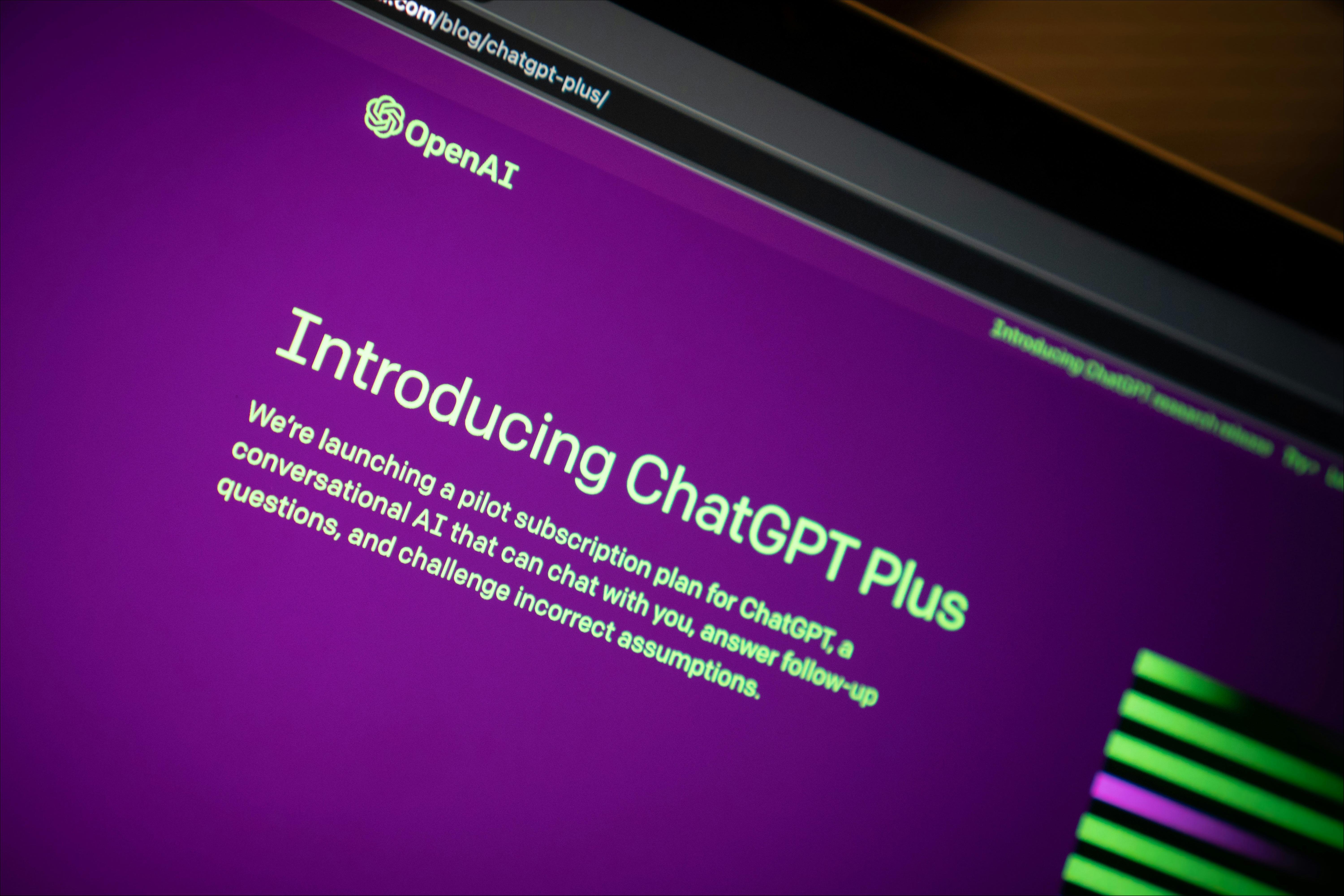
(Photo source: unsplash)
On February 13, GuShiio.comAGI learned that OpenAI CEO Sam Altman announced roadmap news about GPT-4.5 and GPT-5 this morning.
Altman said that OpenAI will soon (within a few weeks/months) release GPT-4.5 codenamed Orion, the last non-thought chain model, and will integrate GPT and the o series, and will soon (within a few months) launch GPT-5 with multiple new features.。
Altman emphasized that the previously announced reasoning model O3 will not be released as a stand-alone model. Most importantly, the free version of ChatGPT can use GPT-5 basic classes for conversations without restrictions under standard smart settings, but it will prevent abuse, while Plus/Pro paying users will use GPT-5 with a higher level of intelligence.
This also means that GPT 4o and OpenAI o3-mini may become swan songs, and GPT-5 will also become the company’s first world model.
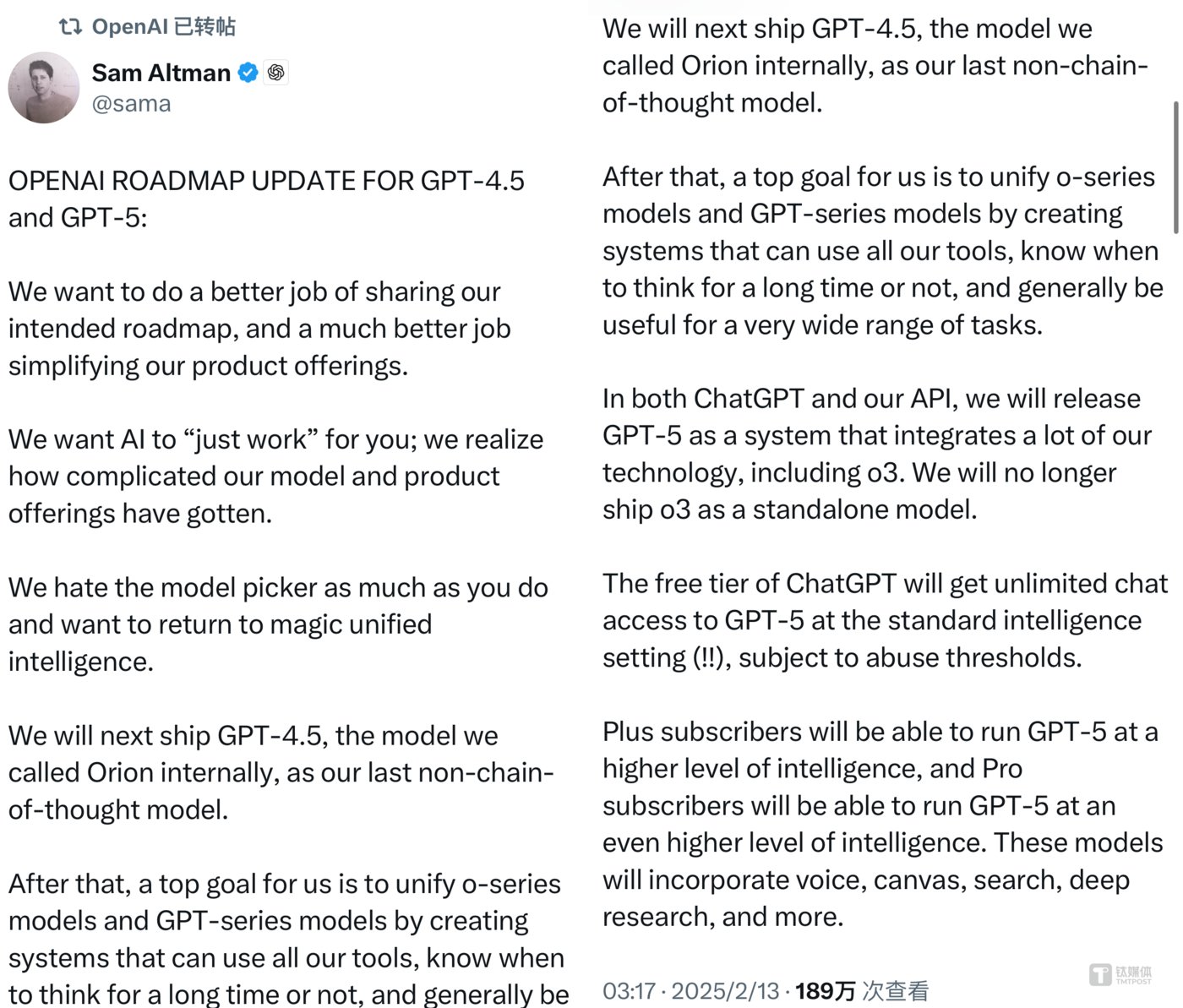
At the same time, OpenAI released a new model specification (Model Spec), the updated model specification places special emphasis on knowledge freedom, that is, AI should allow people to freely explore, discuss and create without unnecessary restrictions; In addition, OpenAI also announced the decentralization of Deep Research, with Plus users costing $20 per month ten times a month, free users using Deep Research twice a month, and o1 and o3-mini now support ChatGPT file and image uploads, and Plus users have an o3-mini-high limit of up to 50 times a day.
As soon as the news came out, the entire network was flooded. Interestingly, netizens asked: But here’s the question. Can it surpass DeepSeek in China? Some netizens also said, Isn’t this a downgrade? Orion is now downgraded to 4.5 and there is no o3. It will even be difficult for it to defeat DeepSeek in a few months. rdquo;
Regarding the transformation of the OpenAI roadmap, on the morning of February 13, a technical expert in the AI field told GuShiio.comAGI that the intelligence and capabilities of the (OpenAI) model could not be improved, and a hodgepodge system was used to provide solutions. In his view, OpenAI has never trained GPT-5, but now it is stimulated by DeepSeek to bring out the new model in advance. However, the development of the model has stalled and the technological progress may not be particularly great.
Obviously, the craze caused by DeepSeek and the latest developments from Musk seem to have prompted a shift in OpenAI’s technological development direction.
OpenAI no longer squeezes toothpaste, GPT-5 may be launched this year
Unexpectedly, in a short 216-word tweet, Altman actually let the entire Internet swipe the screen to see GPT-5 news.
“We want AI to “just work” for you; we realize how complicated our model and product offerings have gotten.& rdquo;
In his tweet, Altman first admitted that OpenAI has realized that its model and product supply have become very complex and needs to be simplified.
In response, OpenAI announced a series of measures, including releasing GPT-4.5, unified o-series models and GPT series models within a few weeks/months, then releasing a new series of models starting with GPT-5, and directly giving users the largest and most advanced model technology system.
“We hate model selection as much as you do and want to return to magical unified intelligence. Our primary goal is to unify the o-series models and the GPT series models by creating a system that can use all of our tools, knows when it takes long thinking, and can often be used for a very wide range of tasks. rdquo; Altman said.
In fact, it took six years to go from GPT-1 to the upcoming GPT-4.5.
- 2018:In June, OpenAI released GPT-1, which is OpenAI’s first large-scale pre-trained language model. Based on the Transformer architecture, it is pre-trained from Internet text data through unsupervised learning. However, its generalization ability is relatively limited and is mainly a language understanding tool.
- in 2019: OpenAI released GPT-2, which has a 10-fold increase in model size and has 150 million parameters. It has demonstrated strong capabilities in generating text. However, due to potential abuse risks, OpenAI is used in an internal test form.
- 2020:In May, OpenAI launched GPT-3, which has 175 billion parameters. It performs amazingly in natural language processing tasks. It can complete various tasks such as generating text, answering questions, and translating. OpenAI does not publicly release the model itself, but only provides access to some users through APIs.
- the 2022: GPT-3.5 was released, and OpenAI used manual annotation of data and reinforcement learning to improve model performance; on November 30 of the same year, ChatGPT, an AI chat robot product based on GPT-3.5, was released and became popular around the world.
- in 2023: On March 14, OpenAI released GPT-4, which has stronger language understanding capabilities and can process image content. It is open to Plus users with a monthly subscription fee of US$20. On November 7, OpenAI announced the upgrade of GPT-4 to GPT-4 Turbo at the first developer conference.
- 2024:In May, OpenAI launched a free-to-use GPT-4o that supports text, visual, and audio multimodal; on July 18, OpenAI launched GPT-4o mini; on September 12, OpenAI officially released a preview of the o1 model and released o1-mini. On December 5, OpenAI released the official version of the OpenAI o1 model, and then announced the o3-mini series this year, which surpassed the o1 model in performance and cost performance.
Today, under the influence of the open source AI model DeepSeek V3/R1 and Musk’s bidding action, OpenAI finally stopped squeezing toothpaste overnight and accelerated in an all-round way, releasing the GPT-5 model as soon as this year.
Altman said that the free version of ChatGPT will get unlimited chat access to GPT-5 at standard smart settings; paying users with a $20 per month Plus subscription will be able to run GPT-5 at a higher level of intelligence; and $200 per month Pro subscribers will be able to run GPT-5 at a higher level of intelligence. These models will incorporate speech, canvas, search, in-depth research, etc.
At present, the ChatGPT Plus subscription interface is like a technical menu: GPT-4o, which focuses on general scenarios, is marked as a timed task version that is suitable for most problems and needs to be manually opened, allowing delayed responses; o1 and o3-mini, which focus on mathematics and logic, emphasize advanced reasoning and coding capabilities respectively;GPT-4 is still retained under the name of a classic model.
According to previous reports, GPT-4.5 (Orion) is the next-generation large model that surpasses GPT-4. Its core advantage lies in its ability to process multimodal data such as text, images and video. The goal is to achieve exponential improvements and achieve better performance than GPT-4’s 100 times stronger capabilities will become an important milestone for the large model to achieve a huge leap forward in language processing and multimodal functions.
OpenAI executive Shaun Ralston posted on the X platform that according to the planned goal, Orion’s computing power will reach 100 times that of GPT-4, and its launch will mark a new era of AI capabilities.
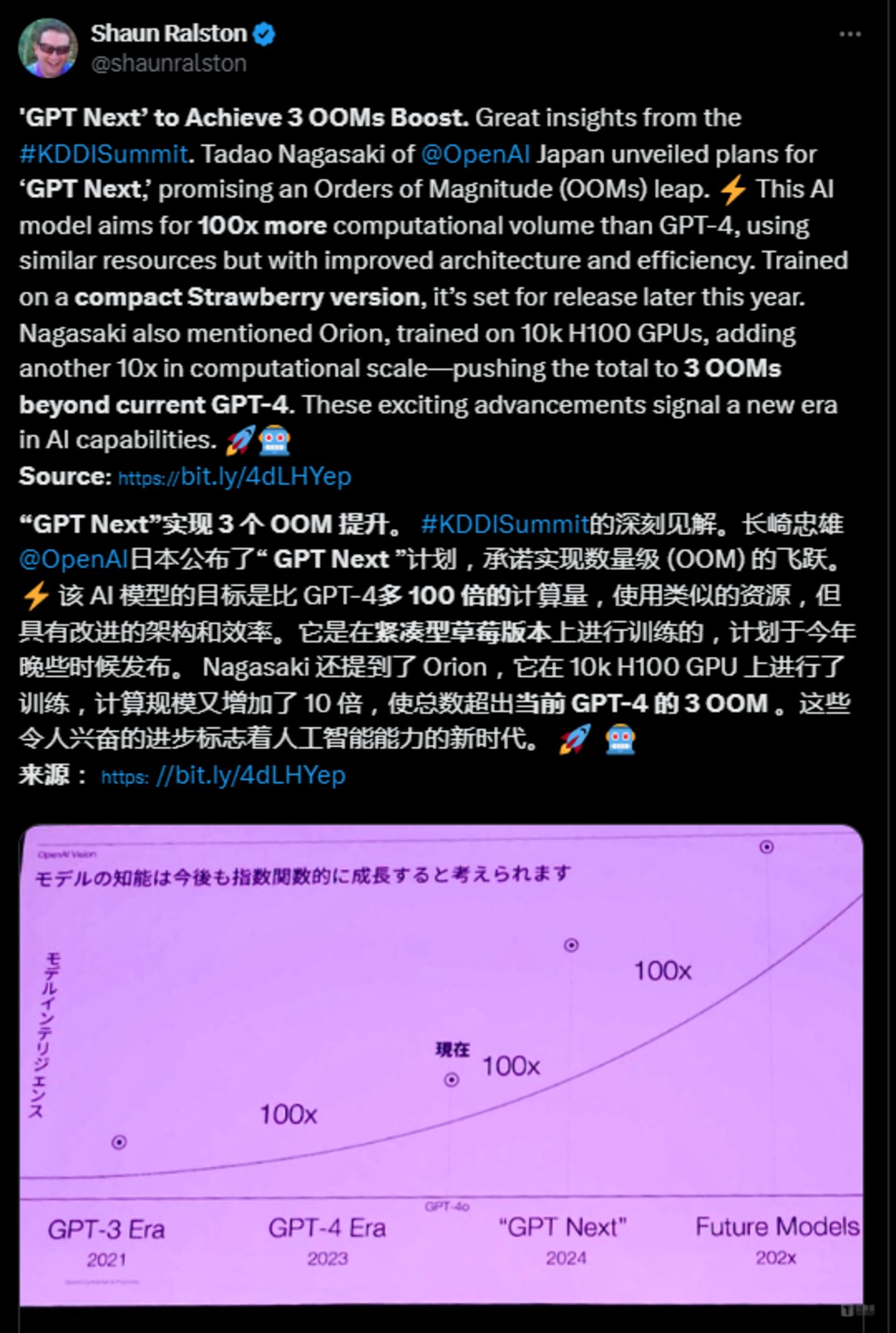
However, it should be pointed out that there were reports several months ago that Strawberries (o-series) and Orion (GPT-4.5) represent OpenAI’s vision for the future of artificial intelligence. Strawberry will redefine reasoning capabilities, while Orion promises unprecedented performance improvements that will together serve as building blocks for the next flagship model GPT-5. Therefore, it is difficult to say that Altman made plans in advance and now came up with a long-thought roadmap in the complex external environment.
In this regard, OpenAI employee Ian Silber lamented: I am very happy to be able to greatly simplify our products, allowing more people to use AI and use AI more often. rdquo;
Logan Kilpatrick, senior product manager at Google AI studio, said“This has always been our plan for Gemini to ensure that reasoning capabilities are part of the basic model rather than side tasks.(That’s why we released 2.0 Flash Thinking).
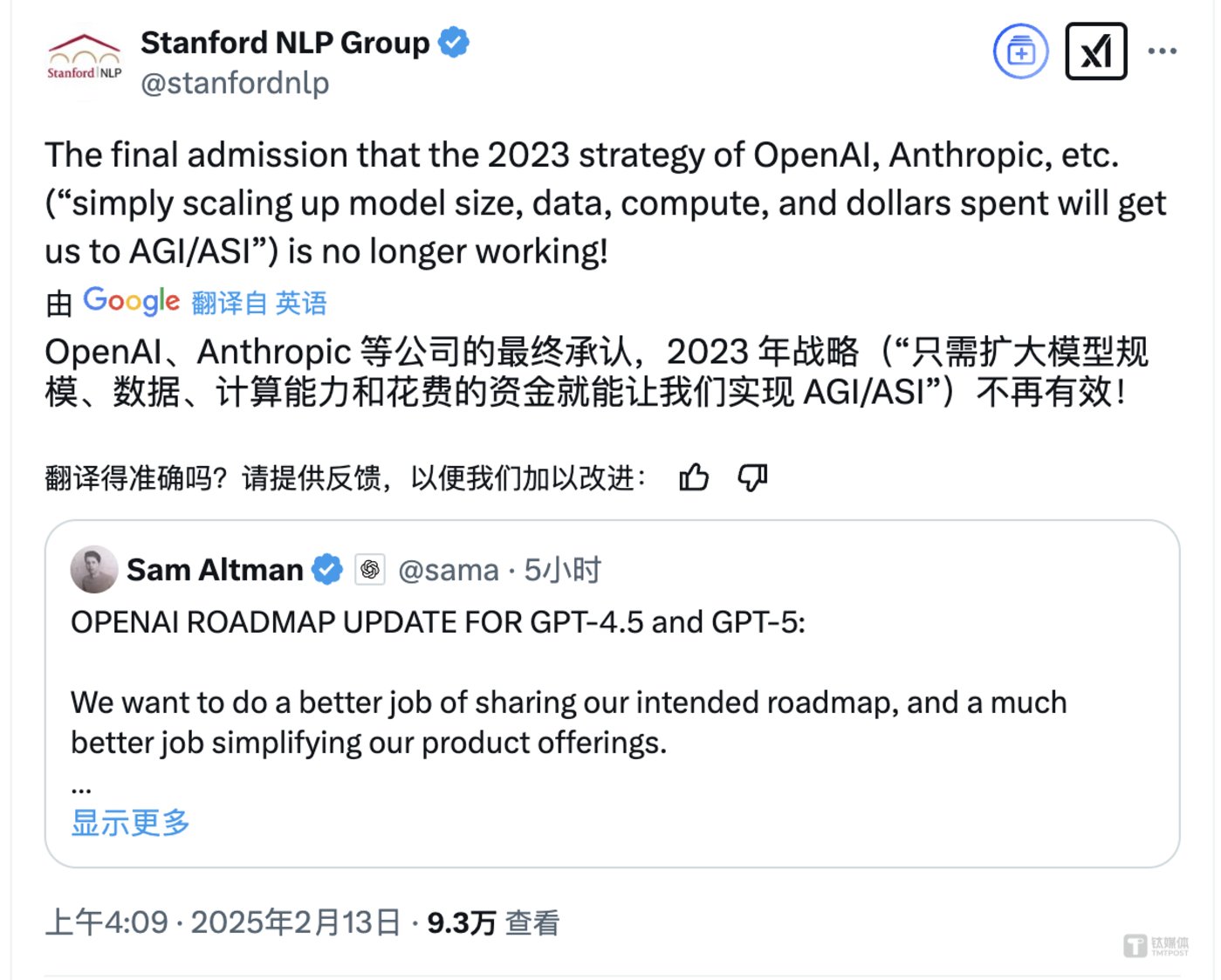
Stanford NLP teamRetweeted the relevant tweet with text saying, finally admitting that OpenAI, Anthropic and others ‘strategy in 2023 () simply expanding model size, data, calculations and money spent will allow us to reach AGI/ASI) is no longer effective.” rdquo;
OpenAI updates model specifications but does not open source, while Google and Byte continue to accelerate model iteration
At the same time, OpenAI officially released an article titled Sharing the latest model specifications, which talked about OpenAI’s methods to shape the required model behaviors. The core is to seek a balance between promoting AI development and ensuring security.
First, at the model specification update level,OpenAI has strengthened its commitment to customization, transparency and intellectual freedom, and is updated based on its foundation in May last year and combined with application experience. Balancing sometimes conflicting goals such as creating a practical security model, preventing serious injuries, and maintaining operating licenses with clear chains of command and additional principles.
Among them, at the command chain level, the sequential priority of the model processing platform, developers and user instructions will be clarified, and users and developers can customize the model behavior within the platform rules; at the same time, the model needs to balance and avoid guiding users and exploring various topics, understand user goals and provide timely critical feedback; establish basic standards of capabilities, covering factual accuracy, creativity and programmatic use; Illustrating how the model balances user autonomy with preventing harm or abuse, the new version comprehensively covers reasons for refusing requests; providing default guidance on format and delivery to ensure clear usability.
Most importantly, OpenAI clearly encourages freedom of thought, and models should be able to discuss a variety of topics and avoid promoting specific agendas as long as no significant harm is caused. By collecting updates to model specifications, preliminary results show that compared with the best system in May last year, the compliance of OpenAI models to model specifications has been significantly improved today.OpenAI believes this is mainly due to increased consistency, but there is still room for improvement.
For the open source specification level,OpenAI has released a new version of the model specification into the public domain under the Creative Commons CC0 license, which developers and researchers can freely use, adapt, and build. At the same time, the open source evaluation reminds that it plans to release more code, artifacts and tools for specification evaluation and coordination in the future, and regularly release new specification versions in the Github repository.
This means that OpenAI hopes to allow more people to use open source OpenAI technology.
After DeepSeek was released earlier,Altman admitted that OpenAI has been on the wrong side of history when it comes to open source in the past,Need to come up with a different open source strategy.
On January 31, 2025, OpenAI announced that it would open the reasoning model o3-Mini to users for free, but its core technology is still closed and it still emphasizes that open source is not our current top priority. This shows that OpenAI will not make a substantial change in open source in the short term.
In the next step, OpenAI plans to continue to expand the scope of the challenge to include cases found in actual use. At the same time, as the AI system progresses, the principle of iteration continues, community feedback is invited and progress is disclosed. No longer publish blog posts for every update.
But at the same time, many AI technology leaders such as Google and Byte are accelerating the iteration speed of closed-source models.
Faced with the trend of low prices and efficiency set off by DeepSeek, in early February, Google officially launched the flagship AI model Gemini 2.0 Pro Experimental, and also released the Gemini 2.0 Flash Thinking model. It is regarded as an important move for Google to actively respond to competition in the AI field and consolidate its market position.
The latest Gemini 2.0 Pro can even call tools such as Google Search and execute code on behalf of users. At the same time, the Gemini 2.0 Pro’s context window has reached 2 million tokens, which means it can process about 1.5 million English words at a time, which is enough for it to read all seven books in the Harry Potter series in a single prompt, and there is still room for about 400,000 words.
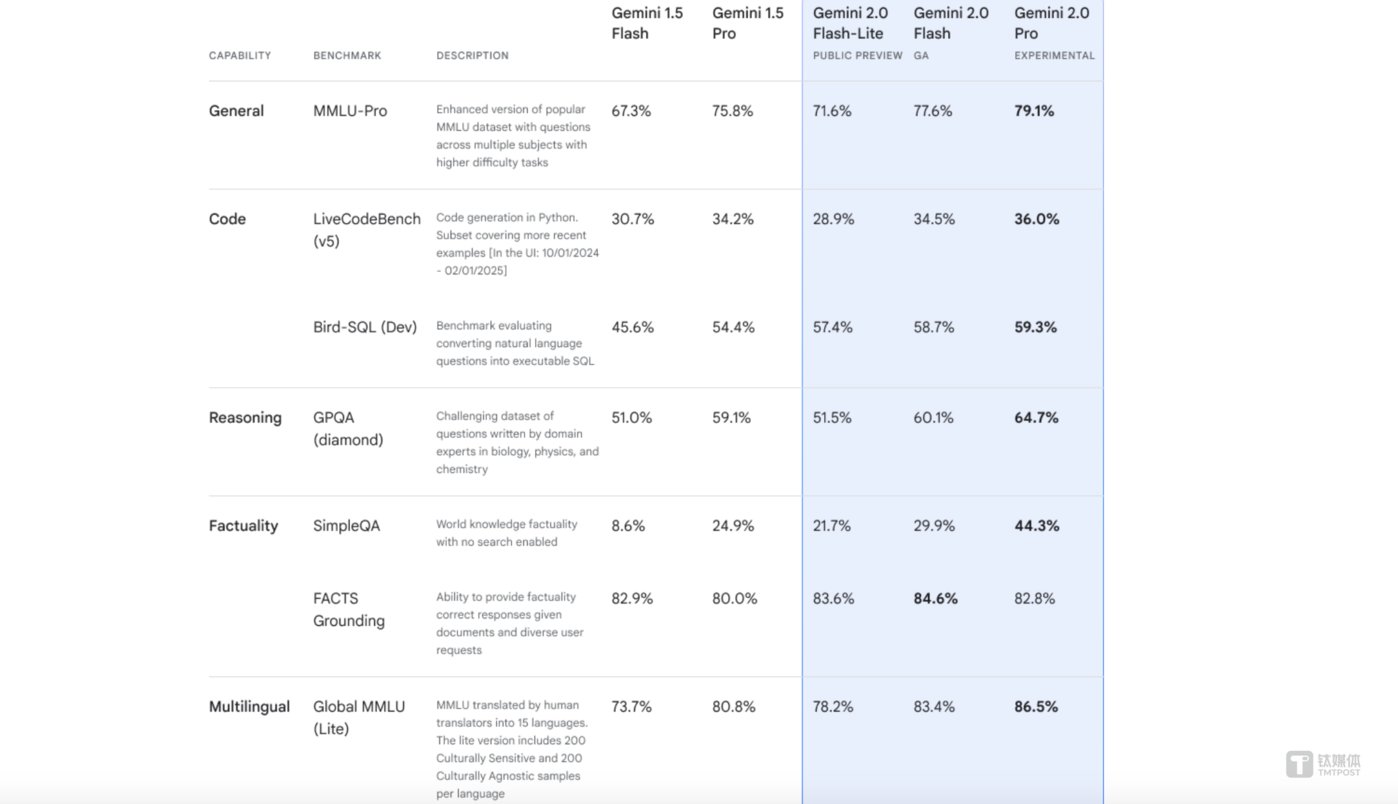
On February 5, Google CEO Sundar Pichai praised DeepSeek during the performance conference call, believing that reducing AI costs will have a positive impact on technology giants and overall AI demand. Pichai said that as the cost of AI reasoning continues to decline, more AI applications will become feasible,It is believed that Google’s Gemini 2.0 Flash model and 2.0 Flash Thinking model are comparable to the DeepSeek R1 model in terms of efficiency.
On February 12, the Bean Bag Big Model Foundation team of ByteDance announced that it proposed a new sparse model architecture, UltraMem. This architecture improves the reasoning speed compared with the traditional MoE (Expert Hybrid Model) architecture by 2 to 6 times, and reduces the reasoning cost by up to 83%. This innovative achievement has been accepted by ICLR 2025, the top conference in the field of machine learning and AI, providing new ideas for solving the problem of reasoning efficiency and scalability of large models.
Earlier, the Doubao Big Model team, Beijing Jiao Tong University and the University of Science and Technology of China jointly proposed a video generation experimental model VideoWorld, which can reach the level of professional 5-segment 9×9 Go and can perform robot tasks in a variety of environments. Currently, the project code and model have been open source.
The news of GPT-5 also comes at a critical moment for OpenAI.This week, the consortium led by Musk offered US$97.4 billion to seek control of OpenAI. After the deal was concluded, Musk would merge OpenAI with its xAI, but the acquisition request was rejected by Altman in seconds.said“OpenAI is not for sale, and Musk’s takeover proposal is more of a strategic move by him to slow down the pace of competitors. I don’t think Musk’s takeover proposal deserves to be taken particularly seriously. rdquo;
According to the plan, OpenAI will also complete a financing plan totaling US$40 billion in the near future, with a post-investment valuation of US$300 billion. At the same time, OpenAI will also be completely reorganized into a for-profit enterprise, which is expected to accelerate the company’s commercialization process.



